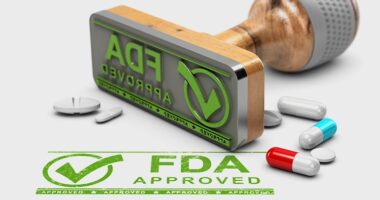New FDA Rule On Rx Drug Importation into the US
The FDA finalized a rule last month as part of a plan for the safe importation of drugs from Canada into the US. The rule is part of the Safe Importation Action Plan that was earlier announced by the Trump Administration as part of a strategy to lower prescription drug costs. What is the plan, and what does it mean for pharmaceutical companies and suppliers?
Inside FDA’s rule on drug importation from Canada
Last month (September 2020), the US Department of Health and Human Services (HHS) and the US Food and Drug Administration (FDA) took measures to implement the Safe Importation Action Plan, which was first announced in December 2019 and was furthered authorized in an executive order on drug pricing signed by President Donald Trump in July (July 2020) to allow the FDA and the HHS to complete rulemaking to allow states to import certain prescription drugs from Canada.
The final rule, which goes into effect November 30, 2020, implements a provision of federal law that allows FDA-authorized programs to import certain prescription drugs from Canada under specific conditions that ensure the importation poses no additional risk to the public’s health and safety with the aim of creating further drug competition as a means to reduce the costs of prescription drugs.
With regard to drug importation from Canada, the rule allows states (including the District of Columbia and territories), Indian tribes and, in certain future circumstances, pharmacists and wholesalers, to submit importation program proposals to the FDA for review and authorization. An importation program (referred to as a “SIP” meaning authorized under Section 804 of the Food, Drug, and Cosmetics Act) can be co-sponsored by a state, Indian tribe, pharmacist, or wholesaler. These programs will be managed by the respective sponsor and any co-sponsors and will be authorized by the FDA to facilitate the importation of certain prescription drugs that are approved in Canada and, with appropriate labeling, meet the conditions of an FDA-approved drug application. Eligible prescription drugs would have to be relabeled with the required US labeling and undergo testing for authenticity, degradation, and to ensure that the drugs meet established specifications and standards. These programs will also have to demonstrate cost reductions of the covered products.
Separate guidance on procedures for drug manufacturers on drug importation
As a separate measure, the FDA also issued guidance that describes procedures that drug manufacturers can follow to facilitate importation of prescription drugs, including biological products, that are FDA-approved, manufactured abroad, authorized for sale in any foreign country, and originally intended for sale in that foreign country. The FDA’s guidance outlines procedures for a drug manufacturer to obtain a National Drug Code (NDC) for certain FDA-approved prescription drugs, including biological products and combination products, that were originally manufactured and intended for sale in a foreign country. The FDA says that the use of an additional NDC for these products may allow greater flexibility for drug companies to offer these products at a lower price than what their current distribution contracts require. Prescription drugs, including biological products, imported under the pathway described in the FDA’s final guidance, could be available to patients in a variety of settings, including hospitals, healthcare providers’ offices or licensed pharmacies, and would include the FDA-approved labeling (including prescribing information).
Industry feedback on drug importation from Canada
The FDA received over 1,200 comment letters on the proposed rule on drug importation from Canada from consumers, consumer groups, trade organizations, industry, public health organizations, public advocacy groups, US states, Canadian entities (including governmental agencies), and others. Highlights of some of those comments and input by the FDA are outlined below.
Volume of drugs that can be imported from Canada. Several comments received on the proposed rule centered on the limitations on the volume of eligible prescription drugs that could be imported, due to the geographic restriction of importing drugs from Canada and the supply of prescription drug products in Canada. The comments suggested that those volume limits could restrict the overall program’s effectiveness in reducing US prescription drug costs. In offering input, the FDA says that final rule affords flexibility for importation programs to choose which eligible prescription drugs to import and in what quantities. This flexibility could allow for adjustments in response to the supply of eligible prescription drugs available for importation.
Personal importation of prescription drugs. Several comments centered on whether the FDA would allow personal importation of certain prescription drugs. The final rule allows for an importation program to be co-sponsored by a state, Indian tribe, pharmacist, or wholesaler and to be managed by the respective sponsor and any co-sponsors. Although this particular final rule does not provide authorization for personal importation of prescription drugs, the FDA noted that although the final rule does not include personal importation of drugs, an executive order signed by President Trump in July (July 2020), one of several executives on drug pricing, authorizes the HHS Secretary to take action to expand safe access to lower-cost imported prescription drugs by, among other things, facilitating grants to individuals of waivers of the prohibition of importation of prescription drugs, provided such importation poses no additionhal risk to public safety and results in lower costs. In late September (September 2020), the FDA issued a request for proposals (RFP) from individuals who wish to seek waivers permitting them to import prescription drugs from certain countries. The RFP provides a pathway for individuals who have waivers to import some FDA-approved drugs through authorized state-licensed pharmacies.
Eligible drugs under importation programs of drugs from Canada. Several comments recommend expanding the definition of “eligible prescription drug,” in particular, to include biological products for the importation programs of drugs from Canada. The FDA noted in its response that the importation program excludes several categories of drug products from the definition of “prescription drug” that can potentially be imported from Canada. These include controlled substances, biological products, infused drugs, intravenously injected drugs, and drugs that are inhaled during surgery.








